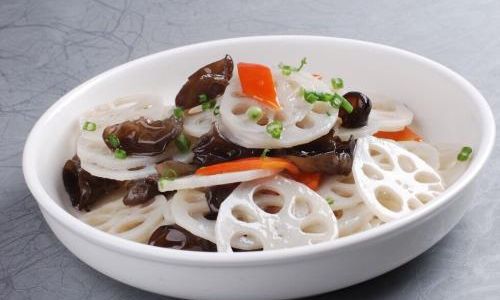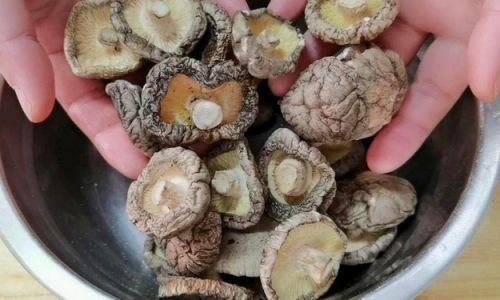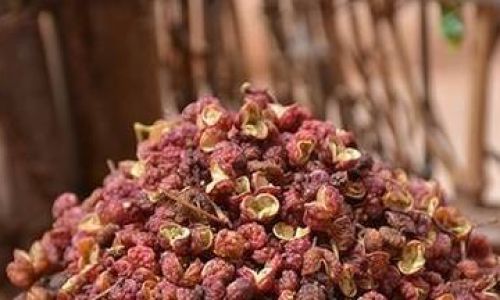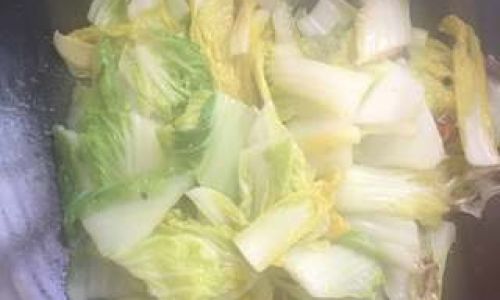Table of content
Tea tree mushrooms, scientifically known as Agrocybe aegerita, are a culinary gem celebrated for their earthy flavor, meaty texture, and impressive nutritional profile. Native to East Asia but now cherished globally, these fungi thrive in tropical and subtropical climates, often growing on decaying wood or in rich soil. Their versatility in dishes—ranging from stir-fries and soups to stews and salads—has made them a staple in kitchens worldwide. However, achieving the perfect balance of texture, flavor, and safety when preparing tea tree mushrooms hinges on a seemingly simple yet critical step: soaking. This article delves into the science and practicality of determining the optimal soaking time for tea tree mushrooms, ensuring culinary success while preserving their natural goodness.
The Importance of Soaking Tea Tree Mushrooms
Before exploring timing, it is essential to understand why soaking is necessary. Tea tree mushrooms, like many dried fungi, are sold in their dehydrated form to extend shelf life and concentrate flavor. Rehydration serves two primary purposes:
- Restoring Texture: Drying removes moisture, causing mushrooms to shrink and harden. Soaking reintroduces water, plumping them to their original size and restoring a tender, chewy consistency.
- Removing Impurities: Dried mushrooms may contain traces of dirt, debris, or preservatives. Soaking helps cleanse them, ensuring a cleaner final dish.
However, soaking is not a one-size-fits-all process. The duration directly impacts the mushroom’s texture, flavor intensity, and nutritional retention. Over-soaking can lead to mushiness, nutrient leaching, and a diluted taste, while under-soaking may result in a tough, fibrous texture and residual grit.
Factors Influencing Optimal Soaking Time
The ideal soaking time for tea tree mushrooms varies based on several factors:

Mushroom Size and Thickness
Smaller, thinner slices rehydrate faster than whole or thick-cut pieces. For example, thinly sliced dried tea tree mushrooms may require 15–20 minutes, while whole caps could need 30 minutes or more.
Water Temperature
- Cold Water: Slower rehydration (1–2 hours) but better retains nutrients, texture, and flavor.
- Warm Water (40–50°C/104–122°F): Accelerates rehydration (20–30 minutes) without cooking the mushrooms, striking a balance between speed and quality.
- Hot Water (Above 60°C/140°F): Fastest rehydration (10–15 minutes) but risks over-softening and nutrient loss.
Intended Use
- Stir-Fries/Quick Dishes: Shorter soaking (15–20 minutes) preserves firmness.
- Soups/Stews: Longer soaking (30–60 minutes) ensures full rehydration and flavor infusion.
Mushroom Age
Older dried mushrooms may require longer soaking to regain tenderness.
Scientific Insights into Rehydration
Rehydration is a diffusion process where water molecules move from an area of higher concentration (the soaking liquid) to lower concentration (the dried mushroom). The rate depends on:

- Osmotic Pressure: Higher temperatures increase molecular movement, speeding up rehydration.
- Capillary Action: Water is absorbed through tiny pores in the mushroom’s structure.
- Enzyme Activity: Warm water may activate enzymes, affecting texture and flavor.
A 2018 study in the Journal of Food Science found that soaking mushrooms at 50°C (122°F) for 25 minutes yielded the best combination of texture and nutrient retention compared to boiling or cold soaking.
Step-by-Step Guide to Soaking Tea Tree Mushrooms
Method 1: Cold Water Soaking (Preserves Nutrients)
- Rinse dried mushrooms under cool water to remove surface debris.
- Place in a bowl and cover with cold water (2–3 times the mushroom volume).
- Soak for 1–2 hours, or until fully pliable.
- Gently rub mushrooms to remove residual dirt.
- Drain, reserving the soaking liquid (rich in flavor and nutrients) for soups or sauces.
Method 2: Warm Water Soaking (Balanced Approach)
- Rinse mushrooms and place in a heatproof bowl.
- Pour warm water (40–50°C/104–122°F) over them.
- Soak for 20–30 minutes.
- Proceed as above.
Method 3: Quick Soaking (For Urgent Use)
- Rinse mushrooms and place in a microwave-safe bowl.
- Add warm water and microwave on medium power for 1–2 minutes.
- Let stand for 5–10 minutes.
- Note: This method may slightly compromise texture.
Signs of Proper Rehydration
- Texture: Mushrooms should feel springy, not brittle or mushy.
- Color: They should regain their original hue (light brown to beige).
- Flexibility: Bending a mushroom should cause slight resistance, not snapping.
Common Mistakes to Avoid
- Over-Soaking: Leaving mushrooms in water for hours can lead to waterlogged textures and nutrient loss.
- Using Hot Water: Boiling water cooks mushrooms, making them soggy and less versatile.
- Discarding Soaking Liquid: The strained liquid is a flavorful base for broths.
- Not Rinsing First: Dried mushrooms may have debris; a quick rinse prevents grit.
Culinary Applications Based on Soaking Time
Short Soak (15–20 Minutes)
Ideal for dishes requiring a firm bite:
- Stir-Fries: Add rehydrated mushrooms toward the end of cooking to maintain texture.
- Salads: Toss with greens, nuts, and vinaigrette for a hearty side.
Medium Soak (25–35 Minutes)
Versatile for most recipes:

- Pasta Sauces: Simmer in tomato-based sauces for earthy depth.
- Omelets: Fold into eggs with cheese and herbs.
Long Soak (40–60 Minutes)
Best for slow-cooked dishes:
- Soups: Add to miso, ramen, or vegetable soups during the last 30 minutes.
- Stews: Braise with meat or tofu for rich umami flavor.
Nutritional Considerations
Tea tree mushrooms are rich in:
- Dietary Fiber: Aids digestion.
- Protein: Contains all nine essential amino acids.
- Antioxidants: Combats oxidative stress.
- Vitamins/Minerals: B-vitamins, iron, and potassium.
Soaking affects nutrient retention:

- Cold Soaking: Preserves water-soluble vitamins (e.g., B-complex).
- Hot Soaking: May leach some nutrients into the water.
Expert Tips
- Use Soaking Liquid Wisely: Freeze it in ice cube trays for future use.
- Adjust for Altitude: At high elevations, water boils at lower temps; increase soaking time slightly.
- Combine Soaking Methods: Start with warm water, then reduce heat for a hybrid approach.
- Store Properly: Once rehydrated, use within 2 days or freeze for up to 3 months.
Cultural and Historical Context
In traditional Chinese medicine, tea tree mushrooms are valued for their immune-boosting properties. Soaking was historically a way to prepare them for medicinal broths. Today, chefs and home cooks alike honor this tradition, blending science with culinary artistry.
Troubleshooting Guide
- Mushrooms Still Tough? Soak longer or simmer gently for 5–10 minutes.
- Too Soft? Reduce soaking time next batch or use in purées/sauces.
- Bitter Aftertaste? Rinse thoroughly after soaking to remove tannins.
Conclusion: The Golden Rule
The optimal soaking time for tea tree mushrooms is 20–30 minutes in warm water for most applications. This balance ensures tenderness, flavor, and nutrient retention. However, flexibility is key—adjust based on mushroom size, recipe, and personal preference. By mastering this step, you unlock the full potential of tea tree mushrooms, transforming a simple ingredient into a culinary masterpiece. Whether you’re a novice cook or a seasoned chef, understanding the nuances of soaking elevates your dishes, proving that sometimes, the best flavors are worth the wait.






0 comments